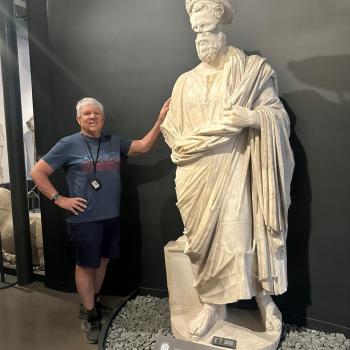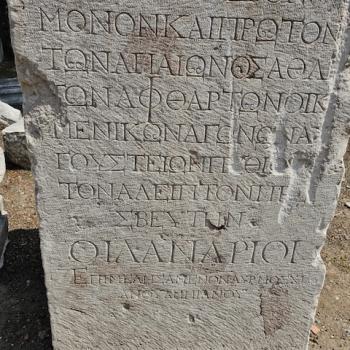The Athens museum has a wonderful Egyptian section. There was considerable cross-fertilization between the Cycladic islands, Mycenae in the south of Greece, and Egypt, sometimes by way of Crete. This is evident from the syncretistic statues of the sphinx, but with the head of a Greek kore (boy). This does not support a theory that Greek culture came from Egyptian culture which in turn is said by some tendentious scholars to have come from sub-Saharan African cultures. No, Egyptian culture was a culture unto itself, and it was highly evolved even before Greek culture had demonstrated much.
Here are some of the Egyptian things found in the museum….
For example notice the false doors into a Pharonic tomb….. This was to prevent grave robbing. Here are some canopic jars into which human entrails would be placed to save them for the afterlife. The Egyptians had a more robust theology of the afterlife than the Greeks, and among other things they believed ‘you can take it with you’, hence Pharaoh’s being buried with their clothes, food, dog, chairs etc.
This was to prevent grave robbing. Here are some canopic jars into which human entrails would be placed to save them for the afterlife. The Egyptians had a more robust theology of the afterlife than the Greeks, and among other things they believed ‘you can take it with you’, hence Pharaoh’s being buried with their clothes, food, dog, chairs etc. 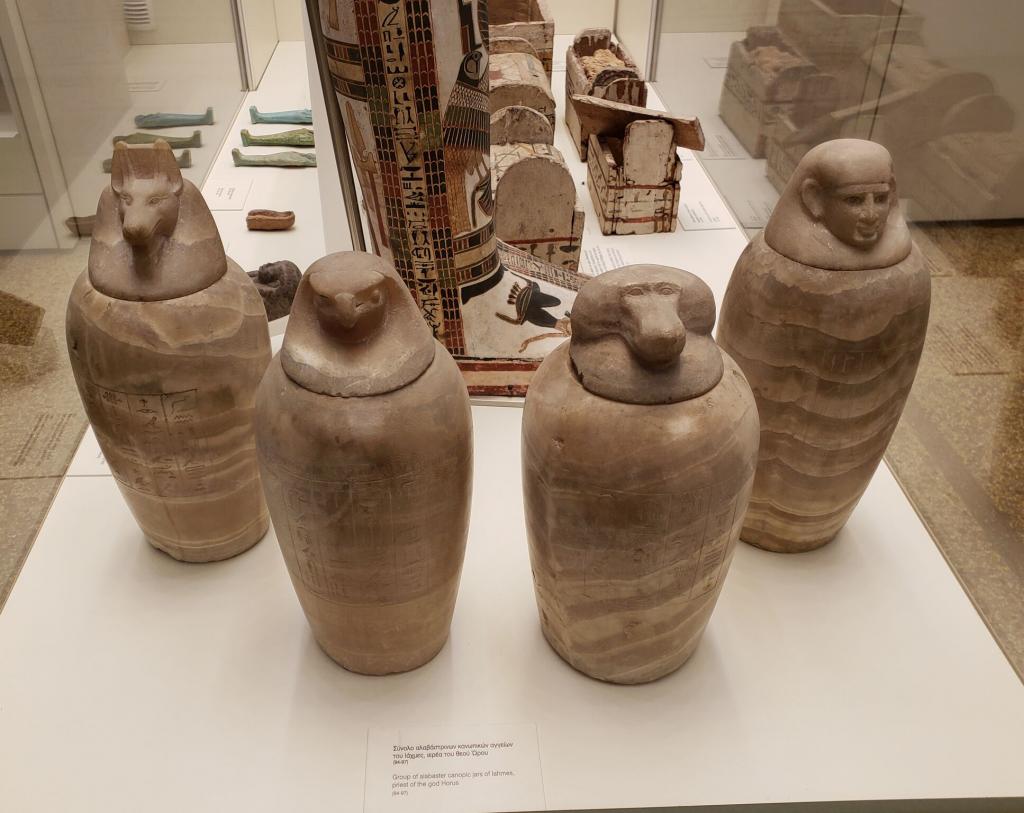
Reading the pictographic language of hieroglyphics is interesting (thank you Rosetta stone), for example in this picture, offerings of animals are being made to a beautiful female deity (perhaps Hatchepsut) and notice the feathers… the symbol for truth or acting with authenticity. The young man is a sincere or true believer. 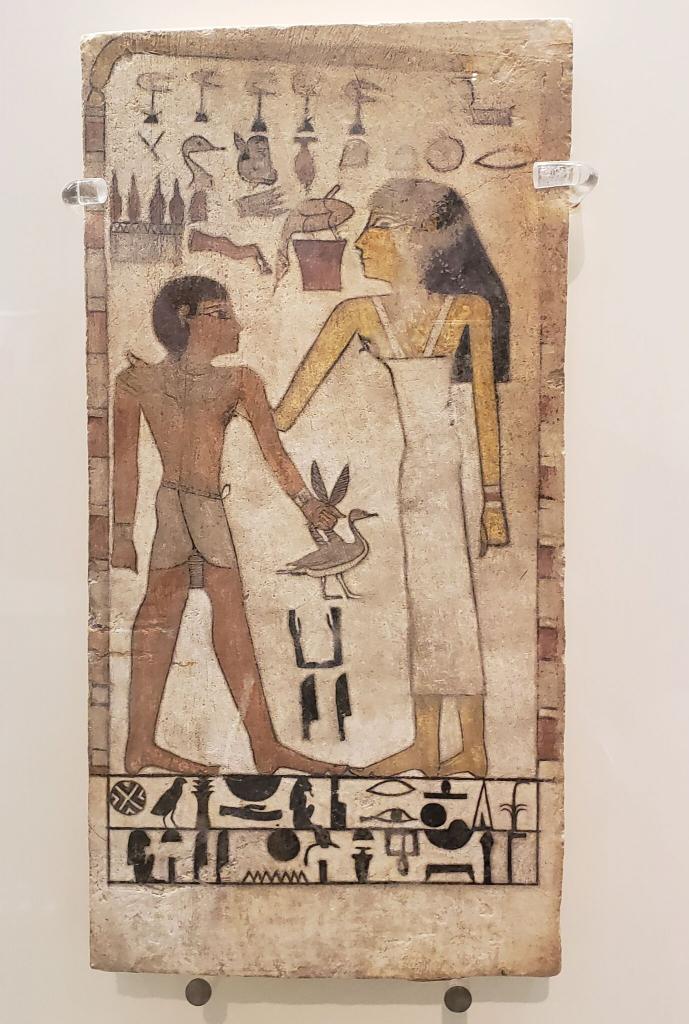
Mummy cases are often spectacular….. And here is the latest in divine fashion….our tatoo artists have nothing on the ancients…..
And here is the latest in divine fashion….our tatoo artists have nothing on the ancients…..

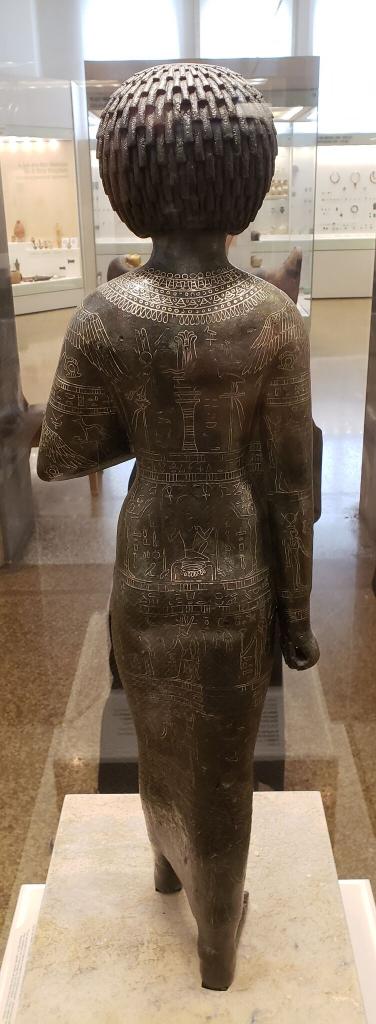
In a society that was largely illiterate or semi-literate, scribes played a crucial role…..among other things, they prepared all kinds of documents, and did inscriptions on stones too…..including gravestones…

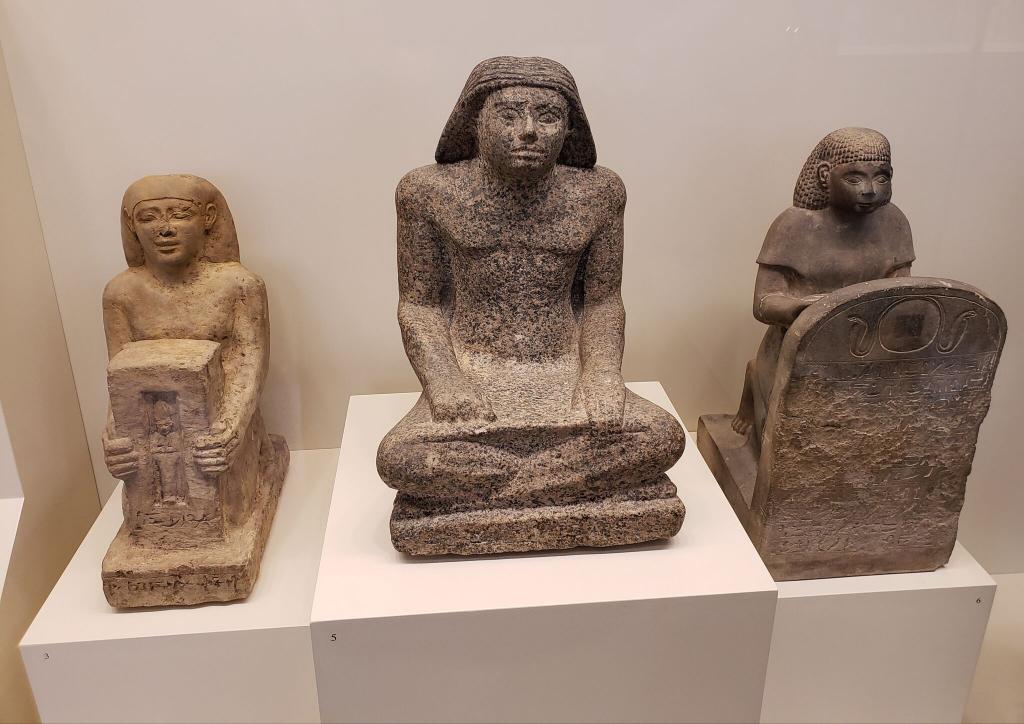
 Notice the inkwell in the shape of a scribe prepared to write….
Notice the inkwell in the shape of a scribe prepared to write….
There were several ancient Egyptian languages (because of course they didn’t speak in a pictographic language like hieroglyphics), one of which was demotic, and another became what we call Coptic 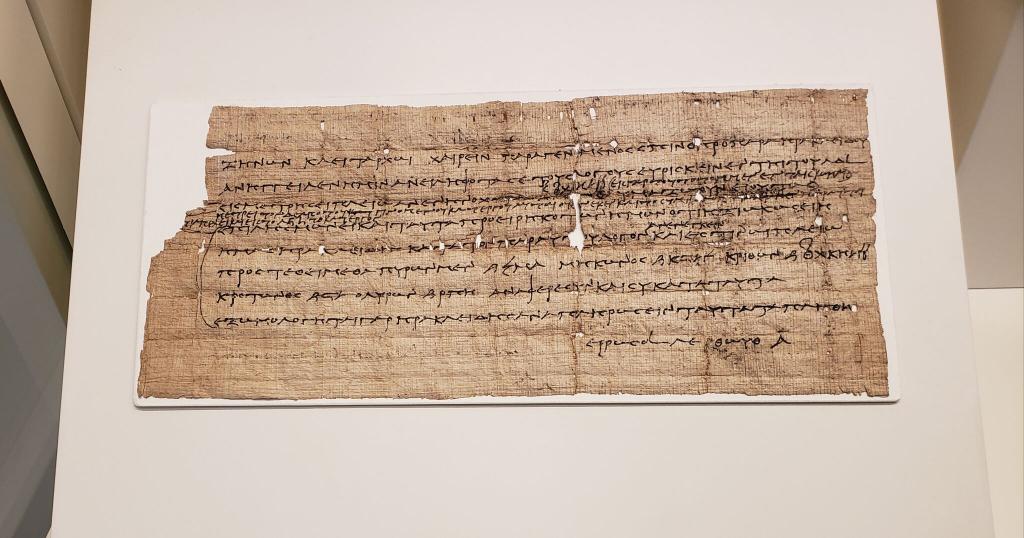 When the Hellenization process came to Egypt, the Egyptians adapted the Greek alphabet, but continued to speak demotic, and they even used Greek characters to write demotic in due course. There were many kinds of precious stones and jewels in Egypt— there was of course marble, granite, alabaster, lapis lazuli, and I could go on…..
When the Hellenization process came to Egypt, the Egyptians adapted the Greek alphabet, but continued to speak demotic, and they even used Greek characters to write demotic in due course. There were many kinds of precious stones and jewels in Egypt— there was of course marble, granite, alabaster, lapis lazuli, and I could go on…..
Carvers of granite and other such stones seem to have worn special gloves to do their work….. And the results were often spectacular—- here’s an image of Sekmet…
And the results were often spectacular—- here’s an image of Sekmet…
Grave robbing was a constant problem, and so beyond false doors into tombs, there were also dramatic symbols guarding the dead, and their precious objects….









